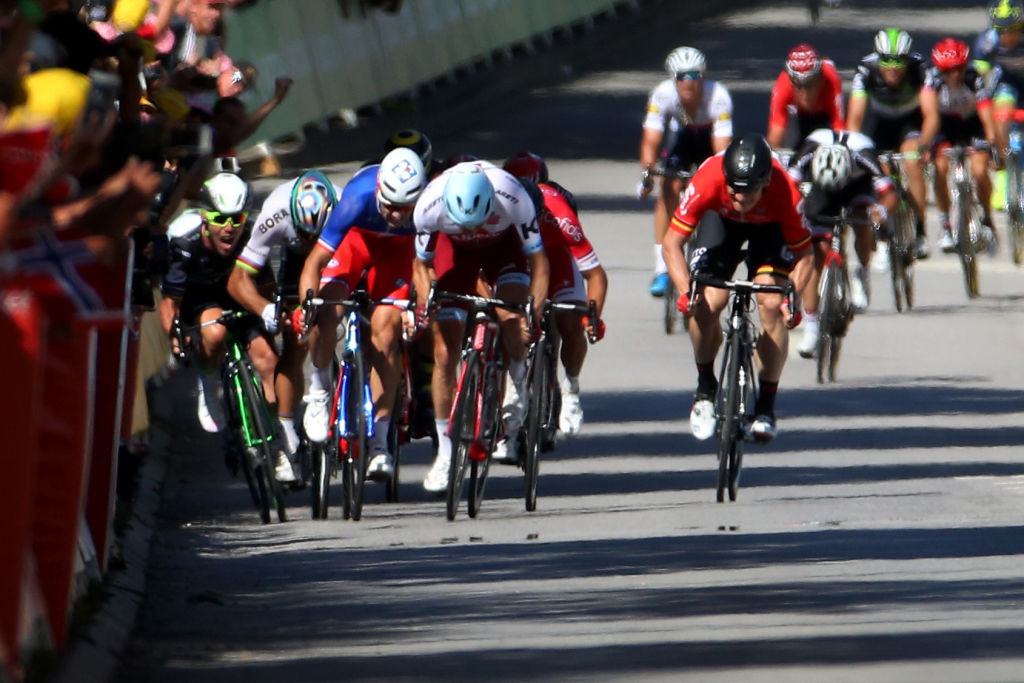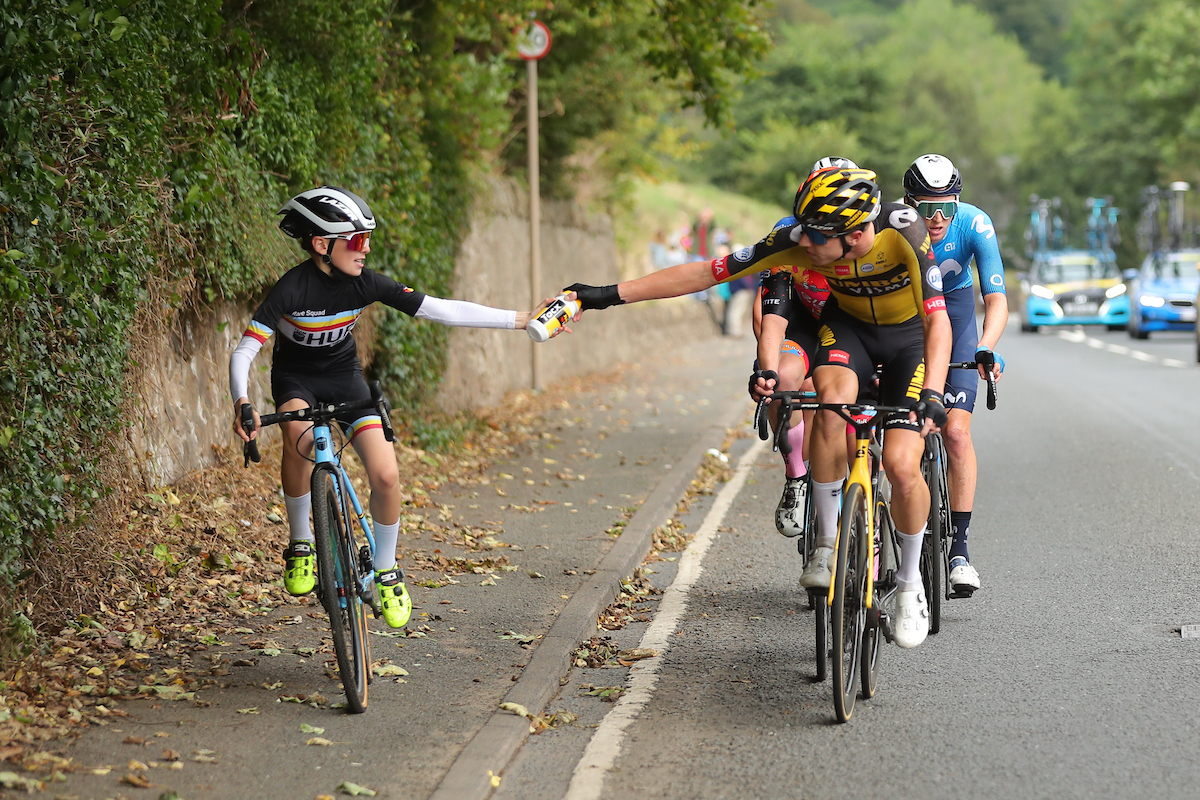When pro cyclists misbehave: Famous relegations and disqualifications
From jumping level crossings to bidon tosses, memorable times when riders have been punished for breaking UCI rules

The 2022 pro cycling season is only just underway and already riders have fallen afoul of the UCI's rules and been disqualified or relegated in races. Cyclingnews looks back at the many ways riders have earned the most extreme punishments the UCI race jury can inflict, short of a disciplinary or doping ban.
In the Tour de la Provence, prologue winner and race leader Filippo Ganna (Ineos Grenadiers) looked as if he'd kept a top-10 finish overall on the final summit stage to the Montagne de Lure, but long after the riders had showered and packed onto the team buses to depart, the UCI officials issued a correction, disqualifying the Italian time trial World Champion on a technicality.
Ganna had swapped out his heavier disc brake bike for a lighter one with rim brakes ahead of the final climb. But rather than drop behind the peloton and stop with the team car, he took the bike change from a mechanic at a predetermined location on the course. By the UCI rules, that is only allowed on a circuit race.
It's not an infraction riders have seen often but a similar punishment was given to Adam Blythe in the 2018 Tour of Oman when his team got permission to go forward to prepare for the change, but they took the bike down and put on the front wheel before handing it across and Blythe was disqualified for breaking the rules.
Aggressive sprinting earns punishment

On Tuesday, also in the Tour of Oman, a far more common disqualification hit UAE Team Emirates when stage winner Fernando Gaviria's lead-out man Max Richeze had his result annulled for moving into the path of Mark Cavendish, causing the QuickStep-AlphaVinyl rider to miss a chance to challenge Gaviria for the points jersey. He finished sixth on the stage.
Officials disqualified Richeze, not for his action being particularly dangerous or violent, but because it interfered with Cavendish's result.
"We think Cavendish probably can win the race, but he lost the green jersey, so it was not a very big act of violence but it’s a very big act on sporting reasons," race jury head Jempi Jooren to Wielerflits. "Probably if Cavendish wins the stage, then he wins the green jersey too. That's probably the biggest reason to disqualify."
Get The Leadout Newsletter
The latest race content, interviews, features, reviews and expert buying guides, direct to your inbox!
Perhaps the most famous sprint disqualification in recent cycling history also involved Cavendish in the 2017 at the Tour de France. There, Peter Sagan and Cavendish collided along the barriers in the sprint on stage 4 in Vittel. Cavendish crashed violently and blamed Sagan for elbowing him. The jury ejected Sagan from the race, rather than relegating him to a placing at the back of the group, an extreme decision that sparked enough controversy for the UCI to eventually agree to introduce a video referee to review such incidents.
Cavendish was also involved when his teammate and lead-out man Mark Renshaw was ejected from the 2010 Tour de France for head-butting a rival during the lead-out, while Gaviria has also been punished for irregular sprinting and was relegated during the 2018 Tour de France.
The jury is more likely to disqualify riders for incidents that lead to injury: Dylan Groenewegen was punished for elbowing Fabio Jakobsen into the barriers at the 2020 Tour de Pologne and sparking a crash that nearly killed Jakobsen and led to a lengthy recovery.
Such behaviour is not limited to the men's peloton: Kirsten Wild sparked a massive crash in the 2019 RideLondon sprint and was initially disqualified but later relegated after arguing that her sudden change of line was not intentional.
Riders have also been kicked out of major races for fighting - like when Luke Rowe and Tony Martin got into it at the front of the 2019 Tour de France peloton, among other incidents.
Don't do anything dumb

Some of the rules are less about conflict between riders and more about taking an advantage to gain time or, more commonly, to make up for time lost due to a crash or mechanical.
Riders are technically prohibited from drafting behind a team car but that action is deeply ingrained in cycling because unlike arena sports, it is impossible to stop play for a mishap. The offence that lost Nils Eekhoff the U23 world title in 2019.
Eekhoff's sheltering behind his team car after a crash was far less egregious than the massive tow from the team car that Vincenzo Nibali took in the 2015 Vuelta a España that led to the Italian's explusion.
Other rules are imposed for the riders' own good for something so obvious there shouldn't have to be a rule about it. For example, the ban on riders jumping past the closing arms of a level crossing. It took a moment of the 2015 Paris-Roubaix, when a large group of riders skirted the gates and crossed the rail line just ahead of an oncoming high-speed train, to lead the UCI to revise the rules to be more specific than before. Since 2016, when riders were booted from the women's Strade Bianche and the men's Schledeprijs in 2018, there have been fewer incidents.
In recent years, the UCI has tried to enforce rules on discarding bidons, littering and banning extreme positions like the 'super-tuck', leading to an outcry from riders who were disqualified for accidentally dropping gel wrappers, tossing a bidon to a young fan, or briefly getting off the saddle to tuck lower on a descent. The riders eventually convinced the UCI to reduce the punishment to fines and use disqualification only after warnings.
At least the burden is not always on the riders: drivers, motorbike pilots and directeurs sportif have been ejected from major races, too, for causing incidents like the BikeExchange DS running the team car into Pieter Serry at the Giro d'Italia last year, or the famous incident when a media car driver clipped Juan Antonio Flecha and sent Johnny Hoogerland into a barbed-wire fence at the 2011 Tour de France.
The rules are there to keep the sport fair and safe, and while they don't always work or aren't meted out evenly, they're a constant reminder to riders and staff to be on their best behaviour.

Laura Weislo has been with Cyclingnews since 2006 after making a switch from a career in science. As Managing Editor, she coordinates coverage for North American events and global news. As former elite-level road racer who dabbled in cyclo-cross and track, Laura has a passion for all three disciplines. When not working she likes to go camping and explore lesser traveled roads, paths and gravel tracks. Laura specialises in covering doping, anti-doping, UCI governance and performing data analysis.